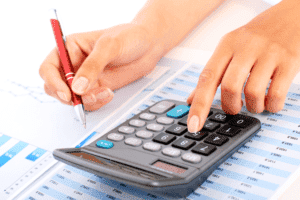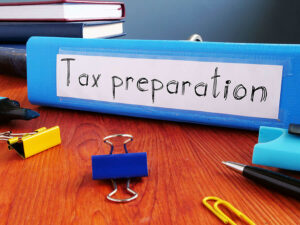What Is the Double Declining Balance Depreciation Method?

This results in depreciation being the highest in the first year of ownership and declining over time. The DDB method involves multiplying the book value at the beginning of each fiscal year by a fixed depreciation rate, which is often double the straight-line rate. This method results in a larger depreciation expense in the early years and gradually smaller expenses as the asset ages.

The drawbacks of double declining depreciation
- Both methods reduce depreciation expense over time, but DDB does so more rapidly.
- As an alternative to systematic allocation schemes, several declining balance methods for calculating depreciation expenses have been developed.
- This makes it ideal for assets that typically lose the most value during the first years of ownership.
- This is the fixture’s cost of $100,000 minus its accumulated depreciation of $36,000 ($20,000 + $16,000).
- Taxfyle connects you to a licensed CPA or EA who can take time-consuming bookkeeping work off your hands.
This cycle continues until the book value reaches its estimated salvage value or zero, at which point no further depreciation is recorded. The Ascent is a Motley Fool service that rates and reviews essential products for your everyday money matters. On Thursday, you have one eighth left, and you drink half of that—so you’ve only got one sixteenth left for Friday. And so on—as long as you’re drinking only half (or 50%) of what you have, you’ll always have half leftover, even if that half is very, very small. Next year when you do your calculations, the book value of the ice cream truck will be $18,000.

Sum of Years’ Digits Depreciation

Generally Accepted Accounting Principles (GAAP) allow for various depreciation methods, including DDB, as long as they provide a systematic and rational allocation of the cost of an asset over its useful life. When changing depreciation methods, companies should carefully justify the change and adhere to accounting standards and tax regulations. Additionally, any changes must be disclosed in the financial statements to maintain transparency and comparability. Here’s the depreciation schedule for calculating the double-declining depreciation expense and the asset’s net book value for each accounting period. In case of any confusion, you can refer to the step by step explanation of the process below.
Declining Depreciation vs. the Double-Declining Method
Suppose a company purchases a piece of machinery for $10,000, and the estimated useful life of this machinery is 5 years. In this scenario, we can use the formula to calculate the depreciation expense for the first year. Accelerated depreciation techniques charge a higher amount of depreciation in the earlier years of an asset’s life. One way of accelerating the depreciation expense is the double decline depreciation method. 1- You can’t use double declining depreciation the full length of an asset’s useful life. Since it always charges a percentage on the base value, there will always be leftovers.
How the Double Declining Balance Depreciation Method Works
Upgrading to a paid membership gives you access to our extensive collection of plug-and-play Templates designed to power your performance—as well as CFI’s full course catalog and accredited Certification Programs. Access and download collection of free Templates to help power your productivity and performance. Sign up to receive more well-researched small business articles and topics in your inbox, personalized for you. You’ll have your Profit and Loss Statement, Balance Sheet, and Cash Flow Statement ready for analysis each month so you and your business partners can make better business decisions. And the book value at the end of the second year would be $3,600 ($6,000 – $2,400).
- In addition, capital expenditures (Capex) consist of not only the new purchase of equipment but also the maintenance of the equipment.
- It was first enacted and authorized under the Internal Revenue Code in 1954, and it was a major change from existing policy.
- In this comprehensive guide, we will explore the Double Declining Balance Method, its formula, examples, applications, and its comparison with other depreciation methods.
- Under the straight-line depreciation method, the company would deduct $2,700 per year for 10 years–that is, $30,000 minus $3,000, divided by 10.
- 1- You can’t use double declining depreciation the full length of an asset’s useful life.
- However, if the company later goes on to sell that asset for more than its value on the company’s books, it must pay taxes on the difference as a capital gain.
- Unlike the straight-line method, the double-declining method depreciates a higher portion of the asset’s cost in the early years and reduces the amount of expense charged in later years.
What Assets Are DDB Best Used For?

It’s widely used in business accounting for assets that depreciate quickly. Through this example, we can see how the DDB method allocates a larger depreciation expense in the early years and gradually reduces it over https://www.bookstime.com/ the asset’s useful life. This approach matches the higher usage and faster depreciation of the car in its initial years, providing a more accurate reflection of its value on the company’s financial statements.
Fixed Asset Assumptions
If you’re brand new to the concept, open another tab and check out our complete guide to depreciation. Then come back here—you’ll have the background knowledge you need to learn about double declining balance. If the company was using the straight-line depreciation method, double declining balance method the annual depreciation recorded would remain fixed at $4 million each period. For reporting purposes, accelerated depreciation results in the recognition of a greater depreciation expense in the initial years, which directly causes early-period profit margins to decline.
- The steps to determine the annual depreciation expense under the double declining method are as follows.
- When changing depreciation methods, companies should carefully justify the change and adhere to accounting standards and tax regulations.
- With other assets, we may find we would be taking more depreciation than we should.
- We take monthly bookkeeping off your plate and deliver you your financial statements by the 15th or 20th of each month.
- Understanding the pros and cons of the Double Declining Balance Method is vital for effective financial management and reporting.

